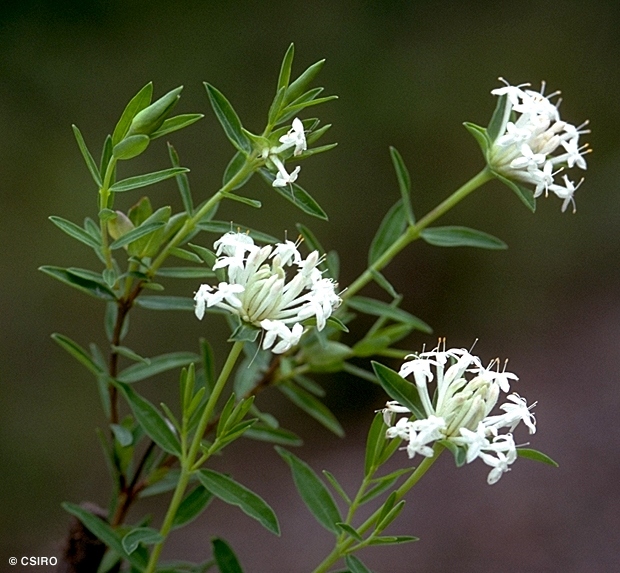Australian Tropical Rainforest Plants - Online edition
Pimelea linifolia Sm.




Smith, J.E. (1794) A Specimen of the Botany of New Holland : t. 11. Type: New South Wales, 1791 & 1793, J. White; lecto: LINN. Fide S. Threlfall, Brunonia 5: 137 (1983).
Queen-of-the-bush; Flax-leaf Rice Flower; Slender Riceflower; Riceflower
Usually flowers and fruits as a herb or shrub up to 1-1.5 m tall.
Flower heads +/- hemispherical, about 20-25 mm diam. Bracts four, large and leafy, mainly glabrous. Perianth tube (hypanthium) about 7-16 mm long. Lobes about 1.5-5 mm long. Outer surface of perianth clothed in white hairs. Stamens shorter than or rarely exceeding the lobes. Pollen orange. Ovary green, hairy towards the apex. Style not centrally located at the apex of the ovary.
Floral bracts four, persistent at the base of the infructescence. Fruits enclosed in hairy brown translucent bracts. Aril thin, white or translucent. Seeds hairy, endosperm scanty. Cotyledons longer than the radicle.
Endemic to Australia, occurs in NEQ, CEQ and southwards as far as South Australia and Tasmania. Altitudinal range in NEQ from 650-1100 m. Usually grows in wet sclerophyll forest but sometimes found on the margin of upland rain forest.
Suspected on field evidence of being poisonous to sheep but the evidence is not conclusive. Everist (1974).
Food plant for the larval stages of the Yellow-spot blue butterfly. Common & Waterhouse (1981).





